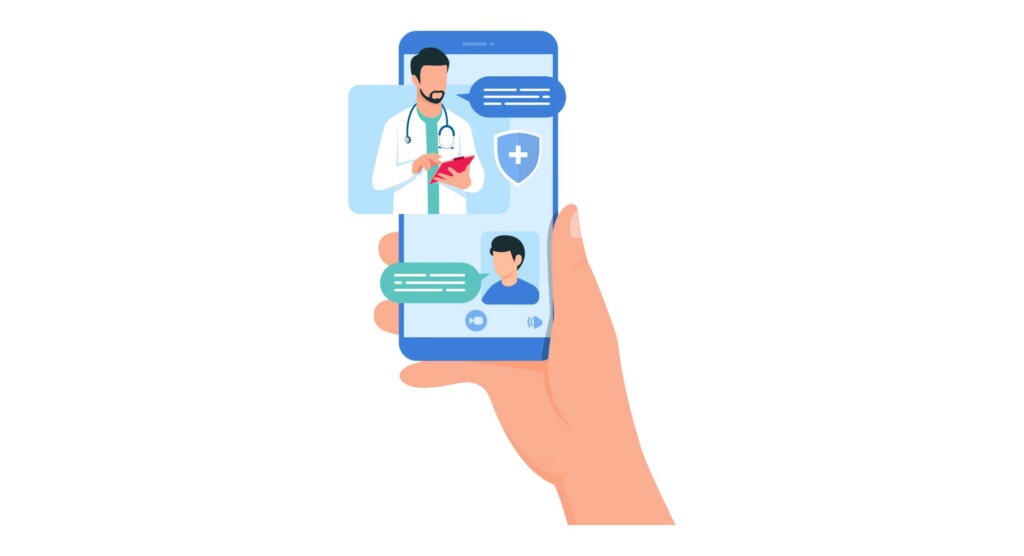Telemedicine is revolutionising the healthcare sector. Whether it’s digital health applications, video consultations or online medical consultations, patients today expect simple, secure ways to see their doctor and obtain prescriptions. The electronic prescription – introduced by law in 2024 and equipped with a Gematik solution from the public sector – replaces the classic paper prescription and enables fully digital care. However, the Gematik solution does not yet meet the requirements of telemedicine platforms. Certifaction offers a data-sovereign solution for issuing legally valid electronic prescriptions – without paper printouts or handwritten signatures, but with maximum document security thanks to Zero Document Knowledge.

What is the Gematik ePrescription?
The electronic prescription is the digital version of the paper prescription and is being implemented as part of the telematics infrastructure (TI) in the German healthcare system. Patients can access the prescription via the electronic health card (eGK), an app or a printout with a QR code. Doctors prescribe medication in the practice or via video consultation, the prescription is signed electronically and transmitted digitally. Directly into the electronic patient file with the statutory health insurance provider (SHI).
Technical requirements for ePrescriptions:
- Access to the telematics infrastructure (TI)
- KIM address (Communication in Medicine)
- eHBA (electronic health professional card)
- Practice software or digital application with ePrescription function
Security with Certifaction
Our solution guarantees a legally compliant, GDPR-compliant digital signature of a prescription. It remains entirely in Europe and fulfils the highest data protection and information security requirements. The digital signature is created using a qualified electronic signature (QES).
Technical requirements for the QES:
- An identity document for identification
- A mobile phone for two-factor authentication (2FA)
Certifaction’s eSignature solution can be easily used with a web browser. For a more stringent workflow, the signature platform can be embedded in the telemedicine platform via API. Implementation is quick and guarantees a straightforward process.
FAQ about the ePrescription
What is an electronic prescription according to the law?
According to the Digital Healthcare Act (DVG), the ePrescription replaces the paper prescription for prescription-only medicines. It is mandatory for SHI-accredited doctors and is transmitted via the telematics infrastructure.
Is a prescription valid without a handwritten signature?
Yes, ePrescriptions do not require a handwritten signature. They are digitally signed with a qualified electronic signature (QES) – for example, directly from your video consultation software.
Is a QES remote signature for ePrescriptions permitted by law?
Yes, according to the eIDAS Regulation, the QES remote signature is equivalent to a handwritten signature and is therefore also legally permissible for medical applications such as ePrescriptions or contracts with a written form requirement.
How long is a prescription valid for?
An ePrescription is valid for 28 calendar days from the date of issue – just like traditional paper prescription printouts.
How do I redeem an ePrescription?
Patients receive a prescription code via app, printout or their health card (eGK) and redeem it in pharmacies – online or on site. Pharmacists scan the code and dispense the corresponding medication.
Am I allowed to publish a recipe on the Internet?
No. Electronic prescriptions contain sensitive health data. Publishing them on the Internet would be a clear breach of data protection.
How does the ePrescription work in digital practice?
Doctors can prescribe medication via healthcare applications, practice software or telemedicine solutions. The prescriptions are digitally signed and transmitted to the TI via KIM – paperless and legally compliant.
What are the requirements for the ePrescription?
You need a connected practice software or healthcare application, a QES, a KIM address and an eHBA. Apps and mobile devices such as smartphones are also integrated in many cases.
What are the advantages of electronic prescriptions for patients?
- Quick prescription from the video consultation
- No visit to the practice necessary
- Easy to redeem via app, eGK or printout
- Integration into the ePA
- More control over your own health data
What data does an ePrescription contain?
An electronic prescription contains information on the prescribed medication, doctor, patient, health insurance company and the redemption. This data is encrypted and only accessible to authorised parties such as pharmacies or specialist services.
Are follow-up prescriptions also available digitally?
Yes, follow-up prescriptions can also be issued digitally. This facilitates the care of chronically ill patients in particular, who regularly require pharmacy-only remedies or medication.
What role do hospitals and specialised services play in e-prescribing?
Hospitals with outpatient care and specialised services will also be integrated into the use of ePrescriptions in the future. The introduction is taking place in stages.
What does the ePrescription mean for insured persons and patients?
For insured persons, the ePrescription means more flexibility in the use of medical services, more data protection and faster access to medication.
Can the ePrescription also be used for pharmacy-only remedies?
Yes, in addition to medicines, pharmacy-only remedies or medical aids can also be prescribed electronically. This means that they can be used in a variety of ways and adapted to suit requirements.
What patterns apply to ePrescriptions?
The ePrescription replaces sample 16 for the pink paper prescription. It is issued as a digital code and can also be handed over as a printout.
Can the ePrescription also be used outside the doctor’s surgery?
Yes, the ePrescription is particularly suitable for mobile healthcare – for example during home visits, via healthcare applications or when doctors and patients use smartphones.
Contact us for a consultation on our data-sovereign ePrescription solutions with QES remote signature for telemedicine, healthcare applications and digital practices.


